Throughout the world of Mustang performance choosing the correct performance parts for your application
is key in order to make the most of your engine as well as driving experience. Upon an
allocation of a new or used Mustang, an enthusiast's first thought is going to be "what can I do to
increase horsepower without breaking the bank, enhance drivability, and functionality? For many
years, there has been an ongoing debate as to whether an open-air element or a closed air element is
better suited for the best overall performance for your Mustang! This modification is single-handedly the most popular item that any enthusiast will purchase for their
Mustang. Most air box units from the factory are engineered on efficiency and emissions for
regulation purposes. Luckily over recent years, engineers at Ford have been getting very clever by
implementing race-inspired technology into their intake systems that allow for maximum CFM into the
engine to increase horsepower as well as efficiency. For years, Steeda has been taking this a step
further by designing both a closed and open cold air intake system to allow Mustang enthusiasts to gain
maximum horsepower over the stock unit! Below is our comprehensive comparison to inform you the features of benefits to both cold air
intake systems and how they can help your Mustang increase horsepower, efficiency, and sound without
breaking the bank. Since the dawn of the S197 Mustang generation, open cold air intakes have been a revolution amongst
Mustang performance and engineering. They have helped push the boundaries of engine performance within
the Mustang world to greater heights than ever seen before. Unlike most stock air intake systems, which
can be restrictive due to factory emission requirements, an open-element air intake allows for high CFM
(Cubic Feet Per Minute) to let your Mustang engine breathe better throughout the RPM range. Think of your engine as a massive set of lungs. When you can breathe in more oxygen, you always tend to
feel better because it is distributed more efficiently to all parts of your body. This same philosophy
is applied to Mustang engines. Remember, more air, fuel, and spark equals more horsepower. The more
oxygen your engine can get, the better it will transmit power throughout each cylinder, which will
create more power and torque. However, you can't get all that horsepower without having all that air go
somewhere. To enhance airflow, Mustang enthusiasts will add a set of shorty or
long-tube headers to ensure maximum airflow. Steeda's proprietary design in our ProFlow Open Air
Intake allows the Gen II & III Coyote engine to pull in a massive 114mm Mass Air meter
comparing to the stock 90-99mm, providing an increase of 30 rear-wheel horsepower and 23 lb/ft of
torque. Increasing the size of MAP sensor allows for an increased amount of CFM to engine the engine,
which will result in greater air-flow. The ProFlow Open Intake will allow your Mustang to keep up with
the rest of the herd. Keep in mind, many of our Cold Air
Intakes will require you to have a custom tune installed to accommodate for the additional
airflow entering into the engine. Like the OEM intake, our
Steeda open-air intakes act like the OEM unit in sealing to the hood for proper airflow, clearance, and
fitment. All of these features combined allow for the intake to maximize performance, styling, and
drivability for your Mustang to give every enthusiast the ultimate driving experience. The major benfit an open-air element has over the closed cold air intake is the ability to be more
user friendly when it comes to tuning, looks, and installation. It allows for more of a diversity of
tunability for supporting modifications. Unfortunately, the closed-air box offers a little more
performance due to the ram-air style design, which force-feeds this directly into the intake manifold
then into the engine itself. Since the invention of MAF (Mass Airflow Sensor) sensors and the OBD II port in the early 1989 in Mustang
models, closed
air element intakes have been the vital source for engineering and development. Luckily over the years,
engineers at
Ford and within the world of Mustang performance have been pushing the boundaries on what is capable of
closed-lid cold air intakes. All of this began when the legendary Coyote V8 was launched in 2011;
Ford started using technology that was usually only found in Mustang racecars to provide the most
CFM possible into the engine as well as increase the RPM range. Unlike its open airbox relative, the closed element cold air intake allows Mustang enthusiasts to have
the lowest intake air temperatures out of any cold air intake. This allows engine bay temperatures to
not
enter the intake as frequently as the open-air element would. To showcase this properly, we will use
our Steeda ProFlow Closed Air Intake to show you the advantages over the
exposed air intake.
Like the Mustangs of the 1960s, Mustang engineers realized that the best way for cold air to enter the
engine is through a ram-air design. It was a smart way for Mustang designers to enhance the overall
performance to ensure engine performance was always high. This same methodology is applied to our closed
airbox intakes, our Steeda engineers carefully designed it to OEM specifications that would allow the
closed box to act as a ram-air intake would. In turn, this allows the Steeda closed lid cold air intake to provide even more CFM by offering a mass
air meter size of 120mm or 128mm all while keeping the IAT (Intake Air Temperatures) as cool as
possible. Like the open cold air intake, it delivers a
staggering 30 horsepower and 25 lb/ft of torque. Fortunately, the great thing that makes this intake
better vs. its open-air element sibling is its nature of being 100 percent performance-oriented, also
known as a max effort intake. When combined with a set of long tube
headers, tune, and
full exhaust,
your Mustang will go from stallion to racehorse! The one variable you want to consider is that the
closed air intake doesn't look as good as the open-air intake, but looks aren't everything.
For some time now, there has been a long debate about which design of intake is best suited to gain the
maximum amount of horsepower and functionality. Each are designed for their own unique purpose, but at
the end of the day, they serve as the aid, which helps your engine take in more air, breathe better, and
put out more horsepower than the stock unit. The great thing between these designs is the ability that
some
of these intakes are designed to be a plugin play install without tuning the vehicle to compensate for
the extra air coming into the engine. The closed cold air intake comes in more potent than its open airbox sibling. It has the ability always
to keep intake air temperatures the lowest possible when running very hard, whether you're at the track
or on your favorite twisty backroad. Also, it allows for a ram-air type design that injects air straight
into the throttle body and then into the intake manifold providing all the oxygen necessary to create
better throttle response and mid to high-range horsepower, in turn, will help with acceleration. While
on the other hand, an open-air element provides a mixture of incredible performance throughout the RPM
range while providing engine bay with an astonishing style and appearance. Ultimately it is going to be up to the enthusiast on which option is better for their usage and how much
power they plan to get out of it based on supporting modification and tuning ability. If you're looking
for style and performance, we suggest going with the open-airbox, and if you want nothing but
performance, we recommend going with the closed airbox. Note that to get the most out of your cold air
intake, most of them will need a tune to see rear-wheel horsepower results you desire. In the end, both
options from Steeda are made in the USA and will give your pony the muscle it needs to go from mule to
racehorse at a moment's notice! Image Credit: Ford Motor Company, Ford PerformanceMustang Open vs Closed Cold Air Intakes
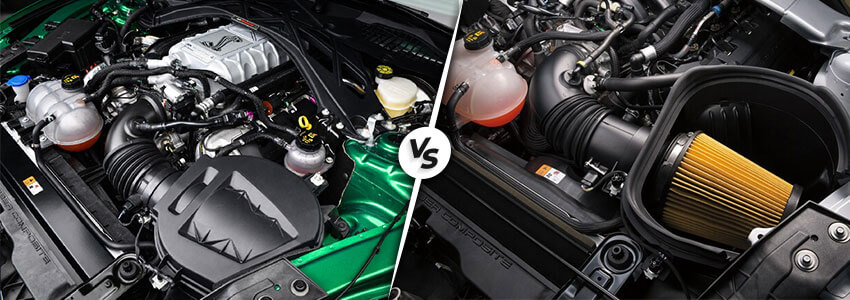
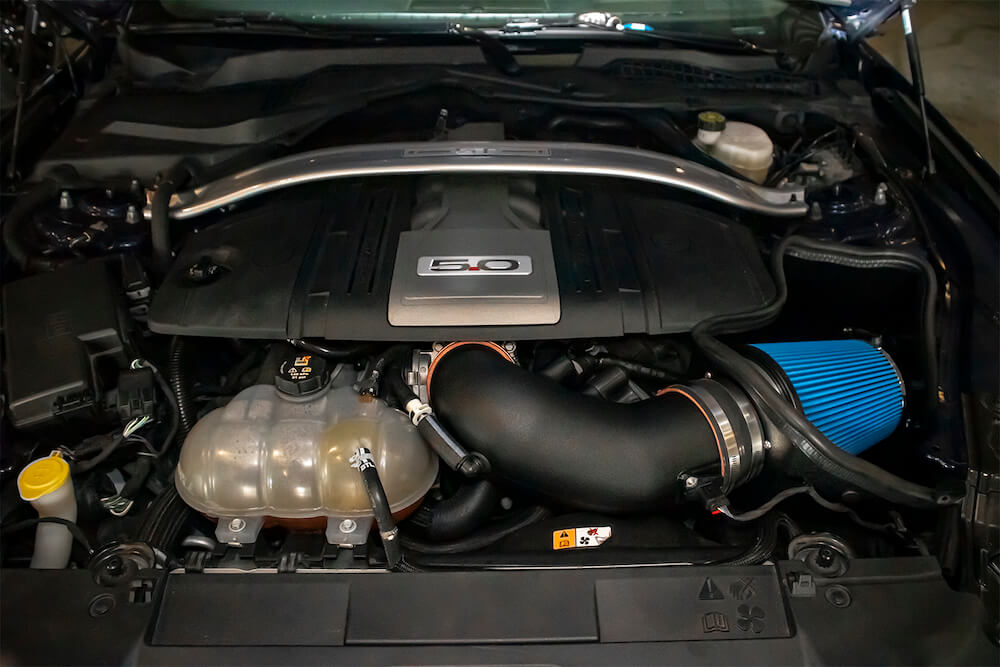
Mustang Open Air Intake
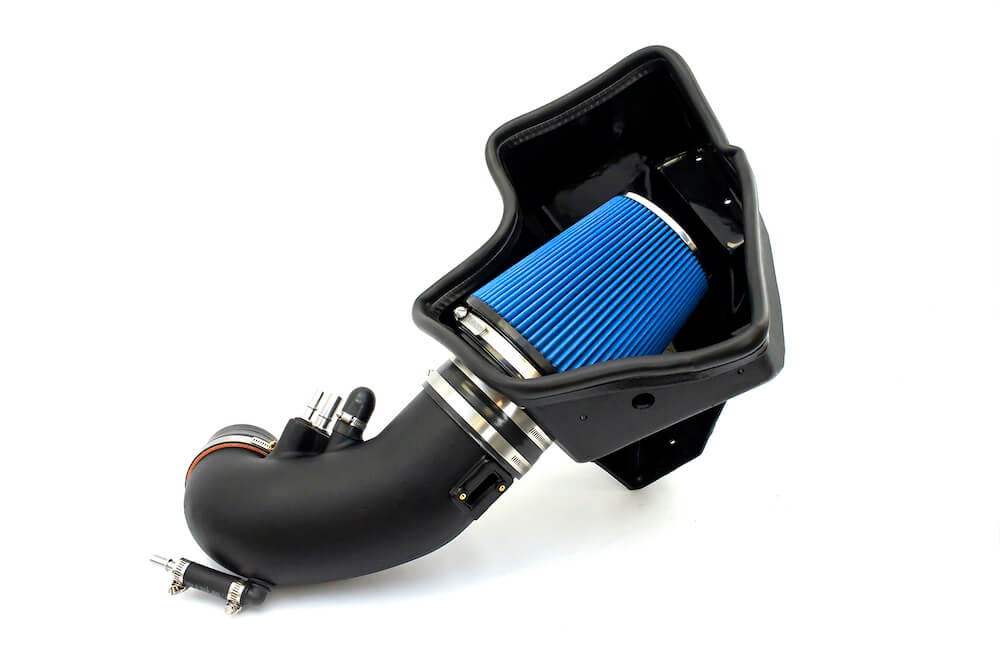
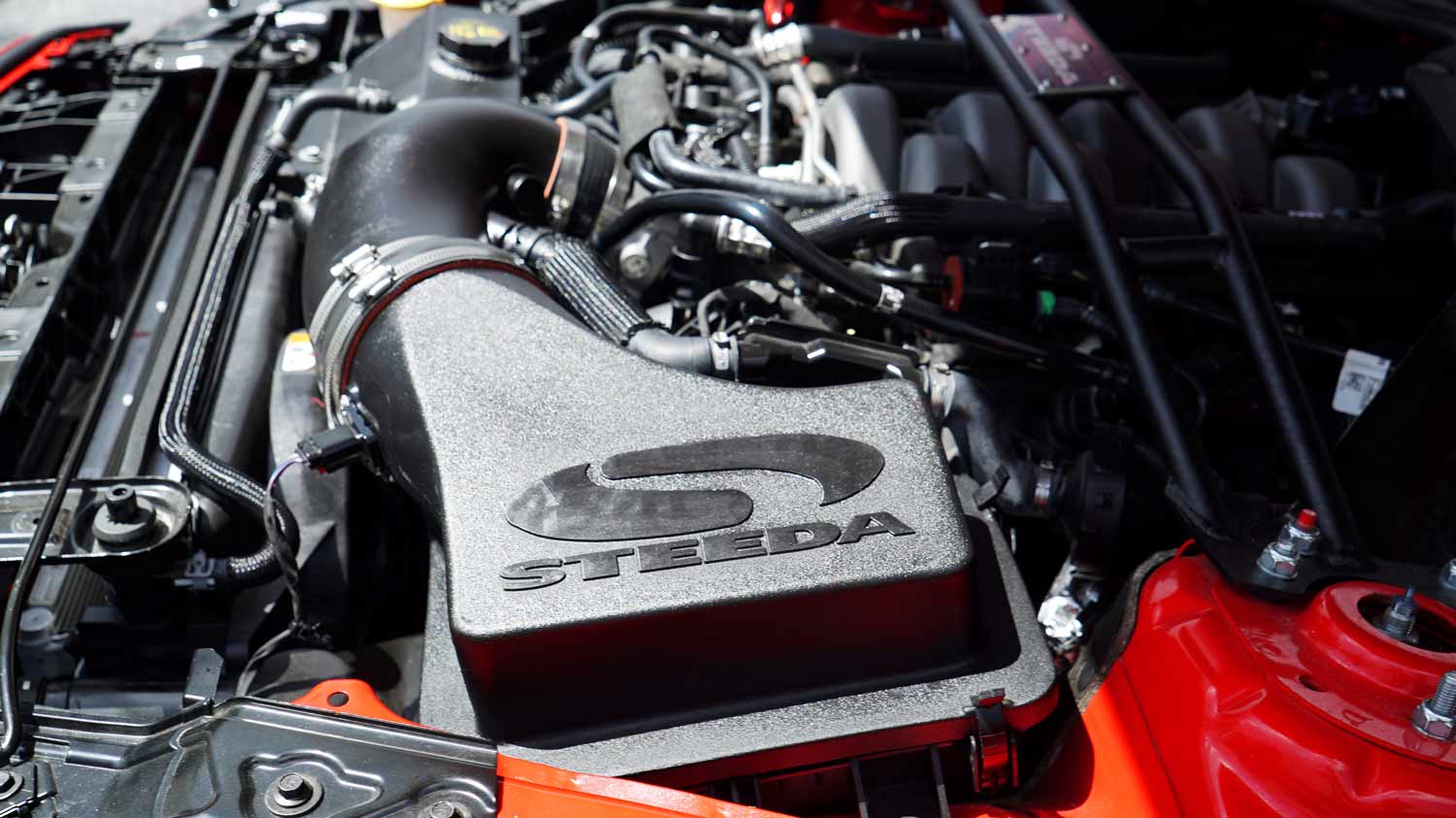
Mustang Closed Lid Air Intake
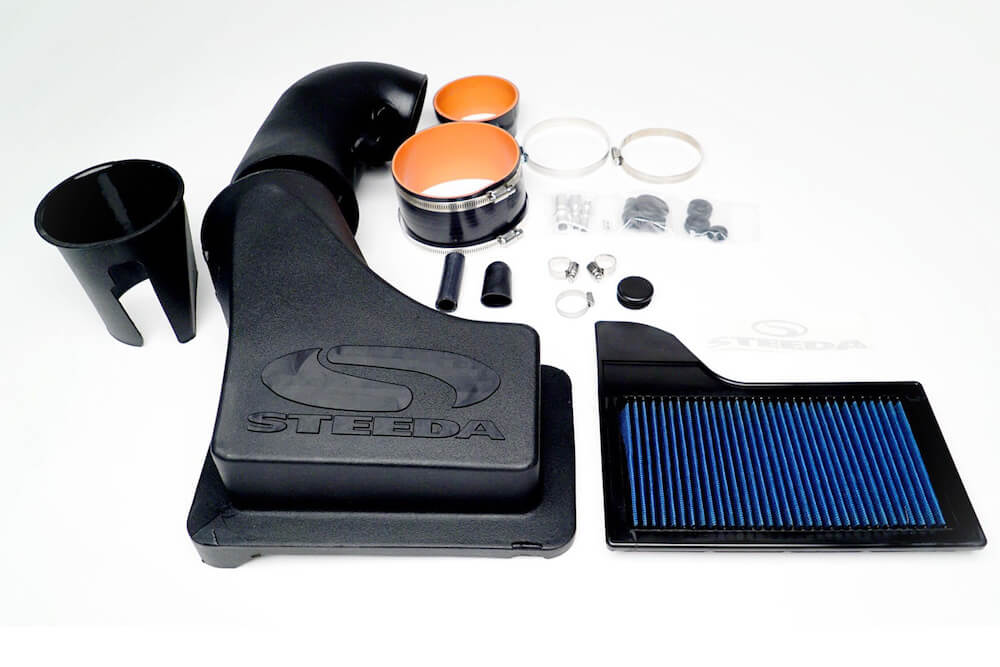

Which Is Better?
Related Articles





